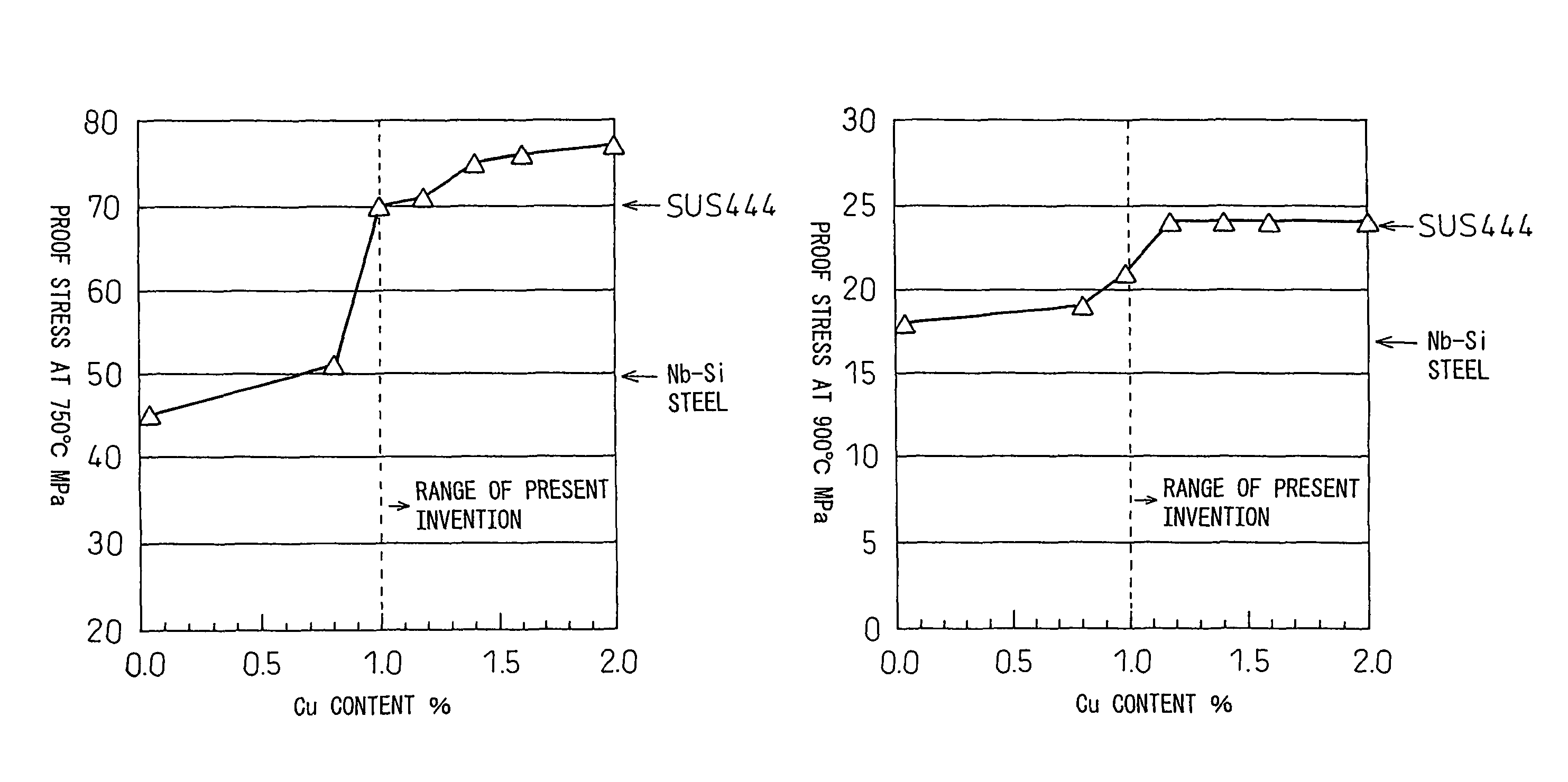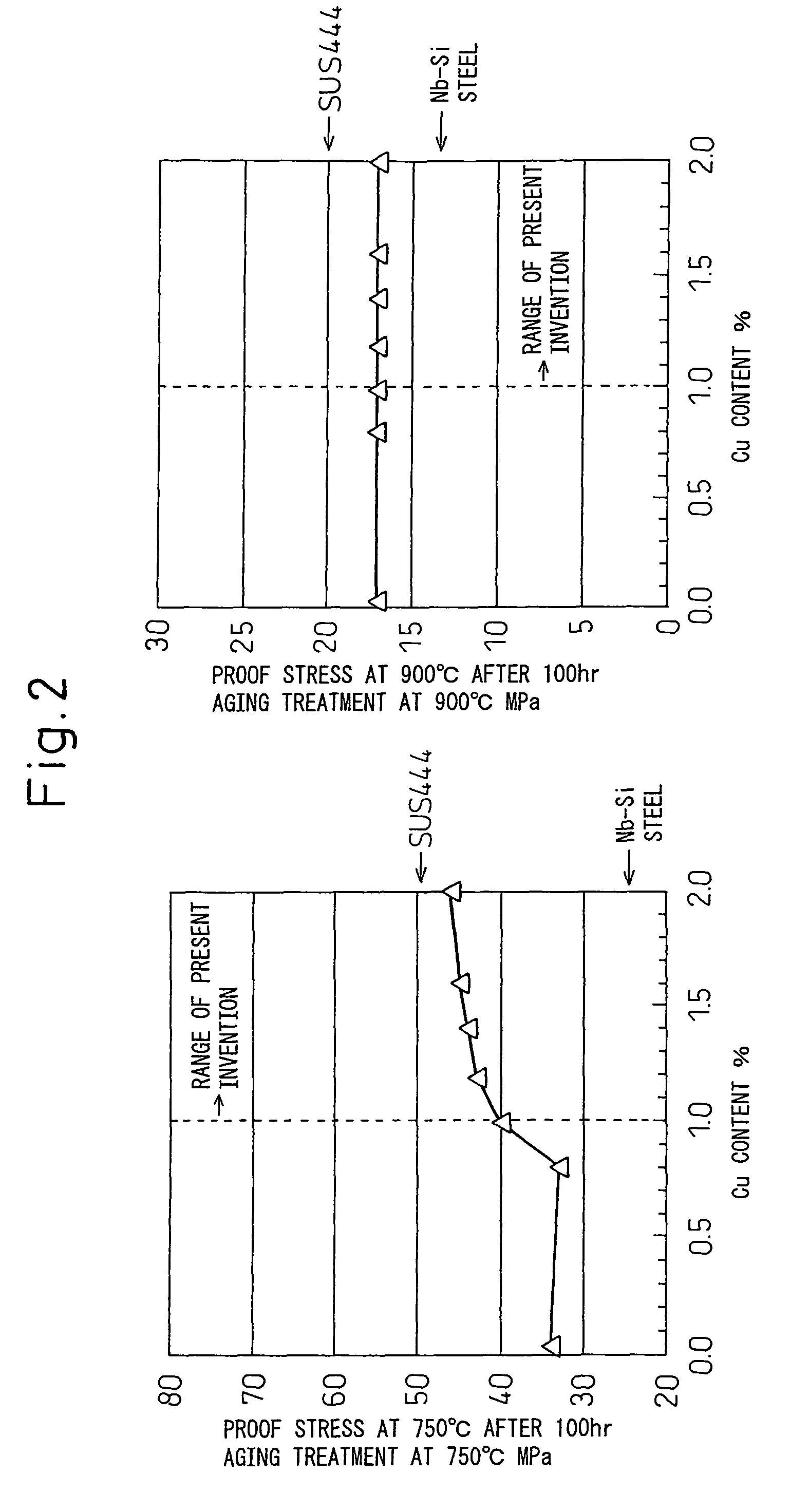Ferritic stainless steel sheet superior in heat resistance
a stainless steel sheet and superior technology, applied in the direction of engines, mechanical equipment, machines/engines, etc., can solve the problems of difficulty in obtaining good high temperature strength, cu steel is more susceptible to abnormal oxidation or scale peeling, and the high temperature strength on a par with sus444 cannot be secured, etc., to achieve suppression of coarsening, high strengthening ability, and the effect of reducing the strength drop
- Summary
- Abstract
- Description
- Claims
- Application Information
AI Technical Summary
Benefits of technology
Problems solved by technology
Method used
Image
Examples
examples
[0040]Steel of each of the compositions of ingredients shown in Table 1 and Table 2 was produced and the slab hot rolled to obtain a 5 mm thick hot rolled coil. After this, the hot rolled coil was pickled, then cold rolled to a 2 mm thickness, then was annealed and pickled to obtain the product sheet. The annealing temperature of the cold rolled sheets was made 980 to 1070° C. to give a crystal grain size no. of 6 to 8 or so. Nos. 1 to 13 in Table 1 are invention steels, while Nos. 14 to 34 in Table 2 are comparative steel sheets. Among the comparative steel sheets, No. 33 is Nb—Si steel sheet, while No. 34 is steel sheet with a record of use as SUS444 steel sheet. From the thus obtained product sheets, high temperature tensile test pieces were obtained and tested by tensile tests at 750° C. and 900° C. to measure the 0.2% yield strength (based on JIS G0567). Further, they were aged at 750° C. and 900° C. for 100 hours, then subjected to a high temperature tensile test in the same w...
PUM
| Property | Measurement | Unit |
|---|---|---|
| yield strength | aaaaa | aaaaa |
| yield strength | aaaaa | aaaaa |
| yield strength | aaaaa | aaaaa |
Abstract
Description
Claims
Application Information
 Login to View More
Login to View More - R&D
- Intellectual Property
- Life Sciences
- Materials
- Tech Scout
- Unparalleled Data Quality
- Higher Quality Content
- 60% Fewer Hallucinations
Browse by: Latest US Patents, China's latest patents, Technical Efficacy Thesaurus, Application Domain, Technology Topic, Popular Technical Reports.
© 2025 PatSnap. All rights reserved.Legal|Privacy policy|Modern Slavery Act Transparency Statement|Sitemap|About US| Contact US: help@patsnap.com



